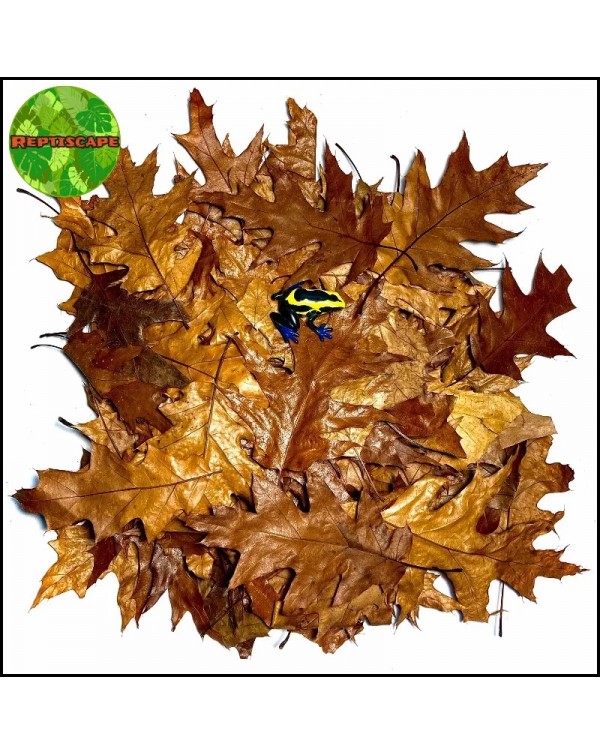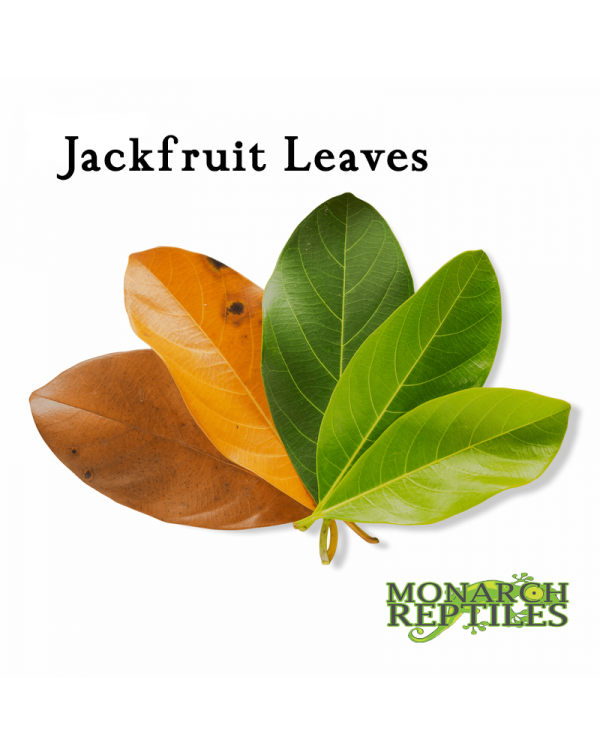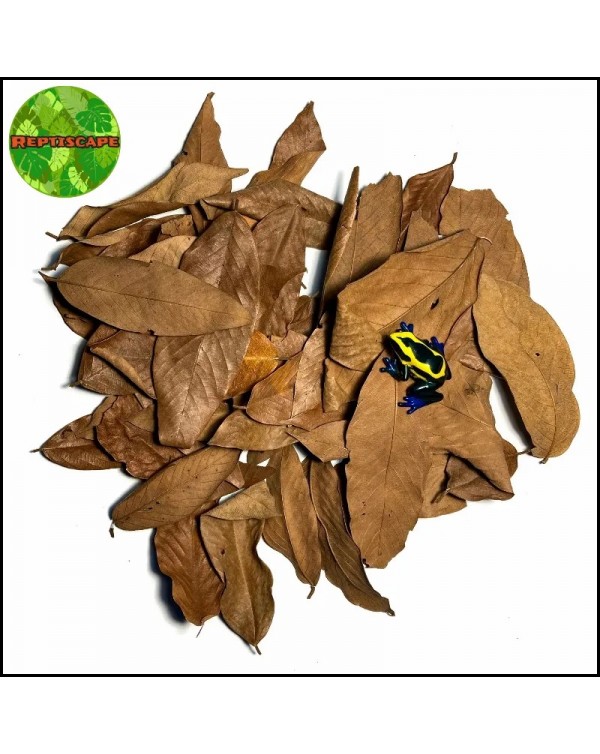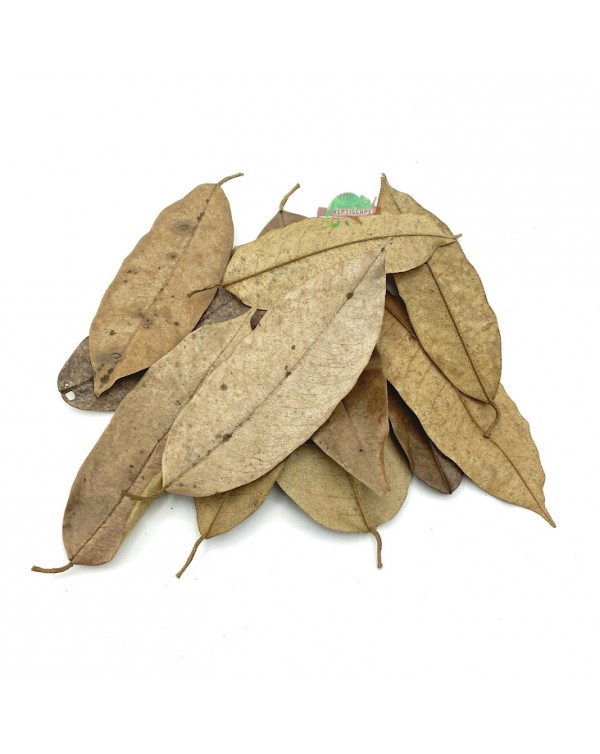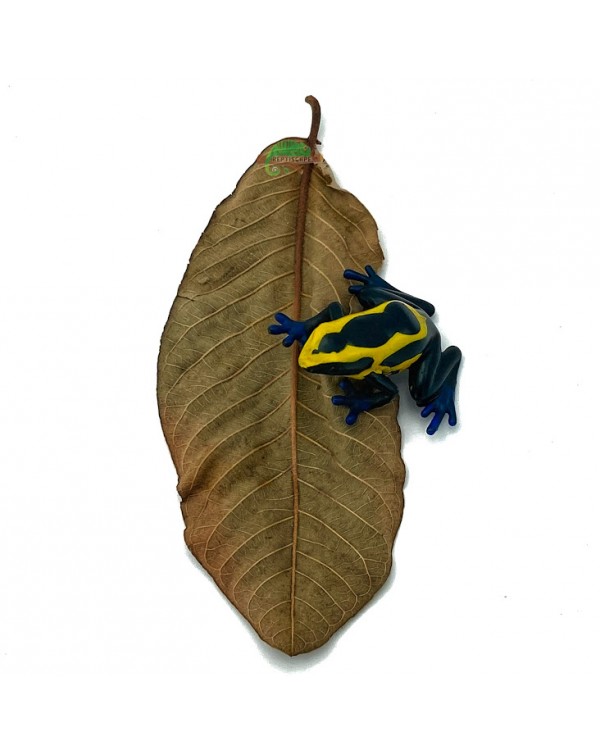Reptiscape - Red Oak Leaves – Leaf Litter - 50gm
- Brand: ReptiScape
- Product Code: RS -Red Oak Leaves - 50gm
- Availability: In Stock
Dried Red Oak Leaves are a hardy leaf litter, as they take longer to decompose than other deciduous tree leaves may. Simply place them into your vivarium to provide a multi use area for your frogs. They will use it for hiding in, foraging for Springtails or Isopods, and even for egg laying sites.Jungle Jewel Exotics harvests our leaves from a safe site that is free of pesticides and other chemicals that may be harmful to your amphibian and reptile friends.Oak leaves are an ideal leaf litter for all frogs to use, especially smaller species like Ranitomeya, Oophaga pumilio, Ameerega, Leucomelas, Auratus, Tinctorius. Snakes, Geckos and other reptiles will also find great enrichment when you add leaf litter to their enclosures. Oak Leaves will help mimic a natural setting and is part of a healthy bioactive enclosure for your reptiles and amphibians.How To Use Red Oak Leaves In A TerrariumLeaf litter not only helps with providing a naturalistic appearance, the leaves also provide hiding spots for animals such as dart frogs and small reptiles. Even snakes will enjoy hiding under the leaves.Simply place a handful of Oak leaves into pile in your vivarium or terrarium. Periodically “fluff” up the pile to help keep it airy so that frogs and other reptiles can easily forage for springtails or to hide in.In the forest, the leaf litter may be several inches thick. Typically in a naturalistic or bioactive terrarium, you want to have the leaves at least a few layers deep and you should routinely add leaves as you see them decomposing.There is no need to remove oak leaves from your vivarium, as they will naturally decompose and be eaten by springtails and isopods and other micro fauna. Add more as leaves as needed.You can even use the tannins from boiled leaves to create a “Tadpole Tea” that is used to help raise Dart Frog Tadpoles.How To Use Red Oak Leaves In An AquariumOak Leaves are part of our Tannin Collection. They can be used in a natural aquarium set up to help add beneficial nutrients and regulate PH levels. Perfect for Shrimp, Betta Fish, Discus and South American Cichlids and other fish.Oak Leaves are an excellent leaf litter for black water aquariums as well as many other setups. The leaves will provide shelter to fish fry and small species of shrimp, crabs, crayfish, snails, and other fish while maintaining a natural look in the aquarium.They also serve as an ideal growth medium for biofilm and diatoms, both of which are key food sources to countless aquatic animal species, including shrimp and other invertebrates as well as fish.Oak leaves also have pH buffering qualities. As they decompose, they release tannins that slowly lower the pH of the aquarium. This is particularly beneficial for aquatic animals that require acidic, low-pH water.Oak Leaves have extremely valuable therapeutic qualities for fish, and can often serve as a harmless preventative medicine in the aquarium. They are highly antibacterial and anti-fungal and support or increase slime coat, scale, and shell production in fish and invertebrates.This is particularly crucial during the introduction and acclimation of animals to the aquarium and after water changes. Oak Leaves also enrich the aquarium water with organic compounds that are beneficial to fish that live in still, stagnant waters such as betta fish.How To Clean And Sanitize Oak Leaves For A Terrarium Or AquariumWhile you can simply rinse you leaves, it is recommended that you also sterilize your oak leaves prior to using them in a terrarium or aquarium. To achieve this you can microwave damp leaves for 1-2 minute, boil leaves for approximately 5 minutes, or bake damp leaves at 200 °F for approximately 15-20 minutes.Each package contains 50 grams of dried leaves.*Due to nature of harvesting, each package may contain small amounts of grass clippings, acorns, seeds and occasionally other leaves. (All are safe to add to a bioactive terrarium)..
Tags: reptiscape, red, oak, leaves, leaf, litter, monarchreptiles
Dried Red Oak Leaves are a hardy leaf litter, as they take longer to decompose than other deciduous tree leaves may. Simply place them into your vivarium to provide a multi use area for your frogs. They will use it for hiding in, foraging for Springtails or Isopods, and even for egg laying sites.
Jungle Jewel Exotics harvests our leaves from a safe site that is free of pesticides and other chemicals that may be harmful to your amphibian and reptile friends.
Oak leaves are an ideal leaf litter for all frogs to use, especially smaller species like Ranitomeya, Oophaga pumilio, Ameerega, Leucomelas, Auratus, Tinctorius. Snakes, Geckos and other reptiles will also find great enrichment when you add leaf litter to their enclosures. Oak Leaves will help mimic a natural setting and is part of a healthy bioactive enclosure for your reptiles and amphibians.
How To Use Red Oak Leaves In A Terrarium
Leaf litter not only helps with providing a naturalistic appearance, the leaves also provide hiding spots for animals such as dart frogs and small reptiles. Even snakes will enjoy hiding under the leaves.
Simply place a handful of Oak leaves into pile in your vivarium or terrarium. Periodically “fluff” up the pile to help keep it airy so that frogs and other reptiles can easily forage for springtails or to hide in.
In the forest, the leaf litter may be several inches thick. Typically in a naturalistic or bioactive terrarium, you want to have the leaves at least a few layers deep and you should routinely add leaves as you see them decomposing.
There is no need to remove oak leaves from your vivarium, as they will naturally decompose and be eaten by springtails and isopods and other micro fauna. Add more as leaves as needed.
You can even use the tannins from boiled leaves to create a “Tadpole Tea” that is used to help raise Dart Frog Tadpoles.
How To Use Red Oak Leaves In An Aquarium
Oak Leaves are part of our Tannin Collection. They can be used in a natural aquarium set up to help add beneficial nutrients and regulate PH levels. Perfect for Shrimp, Betta Fish, Discus and South American Cichlids and other fish.
Oak Leaves are an excellent leaf litter for black water aquariums as well as many other setups. The leaves will provide shelter to fish fry and small species of shrimp, crabs, crayfish, snails, and other fish while maintaining a natural look in the aquarium.
They also serve as an ideal growth medium for biofilm and diatoms, both of which are key food sources to countless aquatic animal species, including shrimp and other invertebrates as well as fish.
Oak leaves also have pH buffering qualities. As they decompose, they release tannins that slowly lower the pH of the aquarium. This is particularly beneficial for aquatic animals that require acidic, low-pH water.
Oak Leaves have extremely valuable therapeutic qualities for fish, and can often serve as a harmless preventative medicine in the aquarium. They are highly antibacterial and anti-fungal and support or increase slime coat, scale, and shell production in fish and invertebrates.
This is particularly crucial during the introduction and acclimation of animals to the aquarium and after water changes. Oak Leaves also enrich the aquarium water with organic compounds that are beneficial to fish that live in still, stagnant waters such as betta fish.
How To Clean And Sanitize Oak Leaves For A Terrarium Or Aquarium
While you can simply rinse you leaves, it is recommended that you also sterilize your oak leaves prior to using them in a terrarium or aquarium. To achieve this you can microwave damp leaves for 1-2 minute, boil leaves for approximately 5 minutes, or bake damp leaves at 200 °F for approximately 15-20 minutes.
Each package contains 50 grams of dried leaves.
*Due to nature of harvesting, each package may contain small amounts of grass clippings, acorns, seeds and occasionally other leaves. (All are safe to add to a bioactive terrarium)

